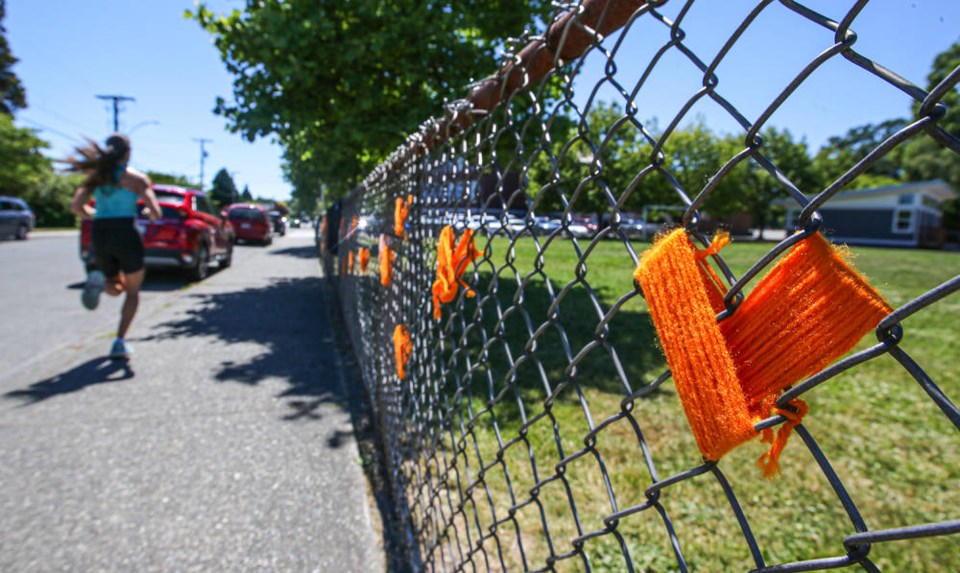Right from Chief Rosanne Casimir’s initial revelation, this story felt different.
This was much more than “breaking news.” It was more than just another moment of horror that would last for a few news cycles before being supplanted by something else.
In the week since the Tk’emlups te Secwepemc announcement of preliminary findings that the historic remains of some 215 Indigenous child abductees have been located at the former Kamloops Indian Residential School, that feeling has intensified.
The ground has permanently shifted under all our feet, just as the perception of the grounds around that wretched “school” are going to be shifted for all time.
This changes everything.
Some Indigenous people may roll their eyes at this sentiment. They know how many times people have proclaimed that things are going to be different. It’s usually expressed in the context of confidence that some fresh new policy is going to improve Indigenous fortunes. Only to see inertia or other events drag many of them back to Earth.
(I can remember feeling quite moved in 2005 at a first ministers’ conference where a blitz on Indigenous housing, education and health issues was announced. The firmness of the heartfelt commitment was uplifting. It lasted about eight weeks. There was a change of government and the whole thing just faded away.)
The discovery of the bodies — more accurately, the initial confirmation of long-held suspicions about the burials — feels much more profound than moments like that.
You could tell by how flags started going to half-mast instantly, before any official directive. Spontaneous memorials materialized nationwide within hours. People stopped what they were doing and instinctively came together.
This sense of a momentous shift isn’t about worthy abstract concepts, or cutting bigger cheques, or passing a new law. It’s based on the upcoming confirmation of tangible evidence of an atrocity that was the root cause of generations of tragedy. It’s presented in the starkest, most heart-wrenching form — the image of children’s remains.
The gut-punch of learning about the bodies is going to pale in comparison to what likely lies ahead. There will potentially be exhumations, and proper commemorations. There will be grief and a nationwide search for similar sites that could compound that grief. The hunt for accountability will last for years. It’s potentially going to be punch after punch.
Canada’s original sin is going to be dragged out of the history books and driven into everyone’s consciousness, even deeper than the truth and reconciliation commission managed to do five years ago.
The political implications are obviously not the top priority right now. But they are so vast, they need to be addressed. When the legislature convened Monday and politicians articulated their thoughts, you could tell how hard this is hitting.
There have been various important moments in the legislature over the years when politicians and First Nations leaders marked milestone decisions. Just 18 months ago, they came together for B.C.’s formal adoption of recognition of Indigenous people’s rights. There were important gatherings earlier about “transformational change” and the Nisga’a treaty.
But this week was different. This moment was about horror and revulsion, not celebration. It’s going to drive as much change as all the more uplifting previous occasions put together.
It may gradually drop from top-of-mind status in the public consciousness. But it’s not going away. All governments and all political parties are going to be resetting their agendas. The public mood and a cascading series of court decisions over time have pushed First Nations issues a lot higher up the priority list than they once were.
Those children’s bodies are going to push them even higher.
One small indicator: Premier John Hogan outlined a new First Nations-forward forest policy Tuesday and linked it to the Kamloops discovery. There will be much more to come.
The cohort of people who think reconciliation is overblown is likely going to shrink. Even the most entrenched racists will have to ponder this. A wide new avenue for progress could open, once we’re past the initial shock.
It’s remarkable to think of how much attention those kids are going to get posthumously, considering how little they got during the brief time they were alive.



